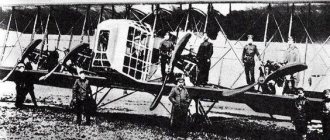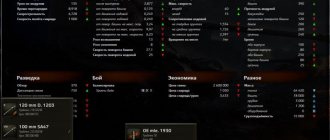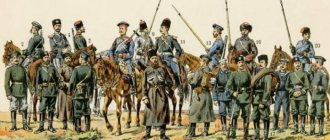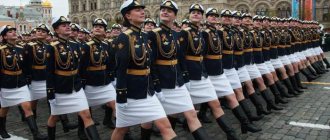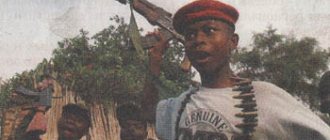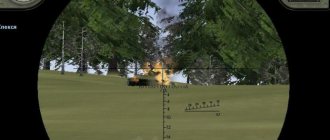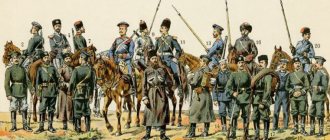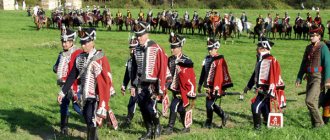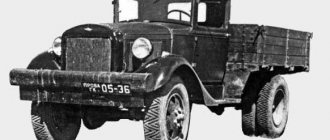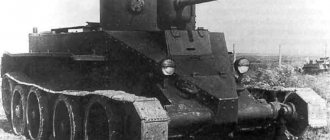The beginning of the Great Patriotic War - even in Soviet films - is associated in many people’s memories with German motorcycles. Which then seemed to be literally everywhere.
In the second half of the war, all-terrain vehicles became extremely popular. Thousands of American SUVs: Willys, Fords, Dodge Three-Quarters honestly worked in the Red Army as vehicles for messengers, commanders and artillery tractors.
During the offensive, mobile motorized detachments of Soviet units not only conducted reconnaissance, but also boldly entered into battle, often with an enemy superior in numbers. And indeed “they were the first to enter the cities.” Not in a pickup truck with a revolver, but in a Willys with a machine gun.
"Bows"
If anyone doesn’t know, the famous “Jeeps” were not invented exactly in . The creator of the first prototype of the future jeep was the small American company American Bantam from Pennsylvania. She, in fact, was the only one who responded to the call of her native army to release a small all-terrain vehicle. Moreover, at a Stakhanov pace: it took only 49 days to develop the prototype. Surprisingly, they succeeded.
One of the first Bantam prototypes (photo: National Museum of American History)
However, the mountains of gold and million-dollar orders did not go to Bantam. When it came to the interests of the state, all sorts of capitalist conventions (like copyright and other things) cared about the American military no more than their colleagues from the USSR. Figuring that the small “Bantam” was unlikely to pull the thousands of hordes the army needed, the generals simply handed over the documentation for the car to the automotive giants “Willis” and “Ford”.
As a result, a little more than two and a half thousand of the all-terrain vehicles they invented were assembled at Bantam, and then until the end of the war they were engaged in the manufacture of trailers for those who were luckier. For "Willis" and "Ford".
The released “Bantams” were dealt with in the USA as they usually did with any non-serial equipment: they were sold to the allies under Lend-Lease.
In the USSR, “bows” - as the new American cars were called - were very welcome. In particular, to the court of Marshal Zhukov, who transplanted his guards into these boxes.
A little history about the first army SUV
In the spring of 1940, the head of the American army was issued an order for the urgent production of an army vehicle for its further use at the front. The difficulty lay in both the very condensed lines and the very technical characteristics of the future “horse”. It was strictly stated that the SUV must have a maximum speed of at least 80 km/h, a wading depth of at least 29 cm, all-wheel drive, a curb weight of no more than 585 kg, ground clearance of 16 cm, and a load capacity of at least 270. kg. By the way, in the process of writing the assignment, the customers did not make any concessions, although the weight was still revised, both up and down. About a hundred enterprises received proposals for the production of future vehicles, and only three of them took the risk of helping out their army. They were American Bantam, Willys-Overland and the German company Ford Motor.
Early modification - Willys Quad, 1940
After 4 months, the first copy from the American Bantam company was presented to the court - the Bantam BRC SUV, created on the basis of the Bantam 60. Although the engineers basically coped with the task, the only drawback was the strong deviation of the car’s weight from the norm. Despite this, they still managed to produce 2605 units, but every single one went to another continent. The test drive of the BRC modification was observed not only by the commission, but also by specialists from Ford and Willis. At that time, the “Willis” version of the car was not yet fully ready. They created a reliable body structure, installed a powerful engine, but failed to create a suitable suspension. After the engineers saw the Bantam BRC with their own eyes, they decided to copy some elements and a couple of months later presented their own version of the SUV.
Willys replica - Bantam BCR40
BRC Bantam testing, 1941 (photo by Acme)
By the way, an interesting fact: a few years later, the “theft” by Willys of the design and characteristics of the car from Bantam was officially proven. But at that time, the American Bantam company no longer existed, so the conflict quickly died down. But back to the story... The Willys Quad also turned out to be quite heavy (almost 1100 kg), so the model was upgraded to the Willys MA with a weight of 980 kg. Around the same time, Ford presented the Pygmy SUV, which also satisfied the commission. Summing up the results of the work of all three companies, the commission gave “satisfactory ratings” to all and allowed the production of a small trial batch of each of them. But there must be one true “winner”, so I had to choose... Although the Bantam BRC itself showed the best results in terms of characteristics and controllability, accordingly its price turned out to be the highest. Ford cars were slightly cheaper and Willys were the cheapest - only 738 dollars and 74 cents. All three versions of the cars were almost identical and only differed in small details, so, surprisingly, the price played a decisive role.
Willys MB army vehicle drawing
The contract was signed with the Willys company and after it rolled off the last copy of the Willys MA, it immediately launched mass production at the Willys Military B series plant at the Toledo plant. By the way, at that time, Willys was not doing well, but to be more precise, they were on the verge of bankruptcy. It was very risky to sign a contract for the production of such a huge number of cars, especially for such an important purpose, so we turned to Ford for help and also entered into a contract with them. Soon all the necessary documentation was sent to them, who began producing a copy of Willys - a Ford GPW SUV
Development of an amphibious vehicle based on the Ford GPW, 1941.
These cars were used not only on domestic lands, but were also massively supplied to the Allied countries. By the way, throughout the entire production period, about 52,000 copies were delivered to the Red Army alone, where they were used by commanders as reconnaissance vehicles or tractors for anti-tank guns. Including Ford copies, a total of 659,031 cars rolled off the assembly line, many of which survive to this day.
Life of Willys MB at the front
Great Britain and the USSR were the main “distribution centers” of Willys MB. They were loved and respected, they moved forward to victory with them and were always confident in their reliability and indestructibility. As a rule, the Red Army was supplied with semi-assembled vehicles in special packaging. This simplified transportation and guaranteed their integrity. It cannot be said that ordinary boxes “with hardware” were sent, because before sending each car was completely assembled and even went through a short run-in, and then disassembled again.
Willys MB tests at the Soviet test site
The Soviet Union began receiving cars in the summer of 1942, after which they were assembled at the Kolomna Plant No. 4 and the Plant named after. Gorky. A year later, the USSR finally decided to test the Willys MB. The action took place near Kubinka near Moscow on a large training ground. The car showed its best side, and even comparing it with the domestic GAZ-67, the soldiers noted better hydraulics, easier handling and comfort. But the fact remains that Willys often failed without even reaching a mileage of 20 thousand km, and the reason for this was improper maintenance and low quality gasoline. American cars were simply distinguished by impeccable quality and durability, but in return they required gasoline with an octane rating of at least 66, as well as regular lubrication of parts. On the territory of the Soviet Union, these factors were often neglected, and the shortage of high-quality raw materials took its toll.
In the USSR, the Willys MB was often used as an anti-tank artillery tractor.
Studying the history of World War II and, in fact, the history of the Willys MB, you can see this car in a variety of unofficial modifications, which were redesigned “in their own way” by Soviet engineers. For example, machine guns with a caliber of 12.7 or 7.62 mm, anti-tank guns, or unique “reflectors” were often attached to the vehicle to destroy German decoy wires.
The Willys MB all-terrain vehicle could overcome fords up to 1.5 m deep
In 1943, Popular Science magazine, with the support of Alabama Congressman Carter Malasco, organized a competition for the best idea for using the Army Willys in peacetime, in a variety of directions. A request for further cooperation was even sent to the vice-president of the Willis company, but the management did not see any prospects, and, in fact, wanted to move away from the production of SUVs of this type, concentrating on more popular types of cars. But in 1944, the situation changed dramatically when one of the former Ford managers took the presidency of Willys-Overland. He began to actively popularize the topic of adapting an army SUV for agriculture and promoting his station wagon. Soon the American army was enriched with these cars, and the civilian modification of the Willys MB was named CJ1A and began to be mass produced in mid-1944.
After the war, Willys MB was widely used in agriculture
Tough Russian men
However, soon the “bows” in the USA ran out. And the real Willys MB sailed to distant Russia. Well, or Ford GPW, which was still called “Willis”. Because all sorts of nerds will be able to figure out the details - who has what frame shape and the configuration of the glove box lid - in 70 years. And then you just had to survive and win.
But soon complaints began to come from the units, as they say now. Like, the allies slipped some kind of broken trough and, in general, this “Willis” of yours is garbage.
The investigation revealed the following: the comrade soldiers have very well learned the folk wisdom that it is better to go badly than to go well. Seven or eight people were packed into the jeeps, after which the fighters... no, they didn’t drive, but hooked a gun with a shell box onto a hook. Moreover, it was not only the light “forty-fives” that caught, but also everything that was clinging. Up to and including three-ton howitzers.
Anton Zheleznyak Technical and engineering expert
The USSR also made its own passenger all-terrain vehicles - the comfortable GAZ-61 and the severely utilitarian GAZ-64. But the supply of American vehicles under Lend-Lease made it possible to direct resources and industrial capacity to more pressing needs; as a result, compared to the Jeeps of domestic passenger cars, very little was done during the war.
Added to this was the habit of unfortunate drivers not to remove their foot from the clutch, gasoline of the “whatever they found” brand, water without antifreeze in winter and other realities of Soviet front-line life. Naturally, with such “care”, American cars died like horses.
(Photo source)
The Soviet command had to urgently issue angry orders from the series: “don’t cram more than five into the back, don’t tow more than one and a half tons!”
Performance characteristics
Looking at the characteristics of the Willys “from our time”, we can say that the car was quite “modest”.
The engine power was only 60 horsepower. The transmission is three-speed, plus reverse gear. Maximum speed is 104 kilometers per hour. Fuel consumption is from 11 to 18 kilometers with a tank of 54 liters. But at that time she coped well with the tasks assigned.
The car's ground clearance was 22 mm, and the minimum turning radius was 5.9 m. The car had the ability to carry 250 kilograms of weight. And the car’s engine capacity was 2.2 liters.
Taking into account, among other things, the dimensions of the car: 3335 * 1585, we can say that the car was indeed quite maneuverable and had good maneuverability.
Car enthusiasts who managed to test-drive surviving copies of the Viliis say that the car drives more like a GAZ-51 truck.
Assault gypsies against tankers
As they mastered the jeeps, people became more and more impressed with what a useful thing it was and how good it was to have it on the farm. And since there weren’t enough “Jeeps” for everyone who wanted it, especially at first, cases of “you have to look at things when you enter a room” arose.
So, in August 1944, Senior Lieutenant Polyakov from the 219th Attack Aviation Regiment stole a regular Willys of the 1st Mechanized Corps of Krivoshein. Moreover, the resourceful pilot stole the car along with the driver.
A year earlier, anti-tank crews from the 100th Anti-Tank Destroyer Division handed over two Jeeps damaged during the bombing to the repairmen of the 21st Army with a request to assemble one whole one from them. The repairmen cheerfully said: “I swear to my mother, it will be a few days.” However, neither four nor 14 days later the all-terrain vehicle was returned. And when the surprised gunners came to investigate, it turned out that their “Willis” (also with its driver) had long been privatized by the head of the army’s artillery supply.
(Photo source)
However, sometimes senior bosses acted more simply, sending out pieces of paper to subordinate units in the style: “Why do you need a jYp? Carry a gun? Vai, take a good horse, and come here.”
Willys MB
The Willys MV car was a power-driven passenger all-terrain vehicle with a front longitudinal engine.
The engine is a 4-cylinder, in-line, carburetor, non-valve type, water-cooled, relatively high-speed (3600 mni1), in its design close to the engine of the GAZ M-20 Pobeda car that appeared later. Its maximum power according to the American standard with a working volume of 2,199 liters is 60 liters. That is, during tests in the USSR - no more than 56.6 liters. With. The maximum torque of the engine is 14.52 kgm (our tests are 14 kgm) - relatively large for its size, which predetermined high dynamic qualities and good throttle response of the car as a whole. The engine, according to the “fashion” of those years, was quite long-stroke (S/D = 1.4), and its high average piston speed (13.34 m/s) and overall tension dictated increased requirements for the quality of engine oil, which was often the case in those years neglected. The compression ratio of 6.48 was common for that time in the West, but quite high for domestic operating conditions. Normal engine operation was possible only with an octane rating of at least 66 (best B-70, KB-70). Use of low-quality domestic gasoline and oils. led to a sharp reduction in service life - sometimes up to 15 thousand kilometers at the front. A characteristic feature of this engine was the use of a piston pin fixedly fixed in the upper head (like the Zhiguli), a camshaft chain drive, an oil pump with internal gearing, and a water pump that did not require lubrication of the bearings during operation. It should be noted that the engine uses widely standardized units and elements in the US Army: generator, relay-regulator, battery, switch-distributor, fuel pump, carburetor, thermostat, fine oil filter, control devices. The developed cooling surface of the radiator allowed the car to sit for a long time with a full load in a trailer in difficult road conditions at high air temperatures. Fuel consumption was relatively high, which was not paid much attention to at the time. Clutch: single-disc, dry Atwood-Trilender. An interesting feature of it, not found today, was the ability to adjust the compression forces of the springs as the driven disk linings wear out. The release bearing did not require lubrication during operation.
Gearbox: 3-speed “Warrior” with synchronizers in 2nd and 3rd gears. The unit was miniature, worked hard and did not provide the required durability when using low-quality oils.
The transfer case, combined with a two-stage range, was attached directly to the gearbox without an intermediate shaft. The front axle drive could be disconnected.
Cardan shafts: two. open, with hinges and needle bearings, with telescopic joints, quite light, but without any special reserves of durability.
Rear axle: with a hypond main gear and a one-piece beam (as later on the GAZ-12), with unloaded wheel axle shafts, the feet and gears of which were installed on tapered bearings. Special treatment of the gear teeth allowed them to operate without scuffing in conventional Nigrol-type lubricants, unlike other American cars with hypoid axles. The ground clearance under the axle housing was insufficient for our roads.
The front axle: driven and steered, is also fundamentally similar to the rear axle. In the steering knuckles (their pivots are also on tapered bearings), three types of equal angular velocity joints were installed: ball joints of the “Beidix-Weiss”, “Rtseppa” type and crackers of the “Trakta” type. The latter were the most reliable. Occasionally there were axles with non-synchronous Spicer-type universal joints in the steering knuckles. Both bridges were distinguished by exceptional strength, performance and durability.
Suspension: classic, with 4 longitudinal semi-elliptic springs, quite rigid, with threaded hinges, which was rational. For better stabilization (against the “shimmy” phenomenon) of the front wheels, since 1942, the front left spring was equipped with an additional reaction spring. Shock absorbers are telescopic, double-acting (they appeared on domestic cars only in 1956). The main difference was the ability to change its characteristics without disassembling the shock absorber.
The steering is a “cylindrical worm-crank with two fingers” type mechanism. The steering wheel was very sensitive. The tie rod is split with an intermediate double-arm lever. In our conditions, the steering linkages sometimes broke when driving harshly.
Brakes: foot - drum, on all wheels, with hydraulic drive, worked flawlessly. Manual - central, belt, with mechanical drive. Its brake drum is installed on the secondary shaft of the transfer case. Control - pistol grip on the instrument panel and cable drive. The handbrake was poorly protected from dirt.
Tires: 6.00-16″ in size with large grit grips, tread pattern - “reversible all-terrain vehicle” type, adopted by the US Army.
Electrical equipment: 6-volt. The car had a special blackout headlight in the protective frame on the left wing, as well as blackout sidelights and rear lights. There is also a plug socket for the trailer lights.
Frame: stamped, closed, with five cross members, constant width (743 mm), quite light. It did not have large safety margins in domestic conditions. At the rear is a military-type towing device. On the front bumper it was possible to install a special winch driven by the transfer case.
Body: open, doorless, 4-seater, all-metal, with a lightweight removable canvas top. Its equipment was truly Spartan - nothing superfluous. Even the windshield wipers were manual. But everything necessary was there. The front glass has a lifting frame. To reduce the height of the car, it could fold forward onto the hood. The hood is of an alligator type, very comfortable, allowing easy access to the engine.
Both tubular arcs of the awning in the folded position coincided along the contour and were located horizontally, repeating the contours of the rear part of the body. The khaki-colored awning at the back had a large rectangular hole instead of glass.
The headlights went well with the powerful stamped radiator lining. Mountings were provided for a spare ka-instrument in the body (at the rear), as well as a shovel and an ax (on the left side).
It should be noted the exceptionally successful, rational design and thoughtful shape of the body, its unique charm. The aesthetics of the car were impeccable. Here, as they say, neither subtract nor add. The car as a whole was perfectly configured. A convenient approach to the units during their maintenance and dismantling was provided. "Willis" had excellent dynamics, high speed, good maneuverability and maneuverability. Its small dimensions, especially its width, made it possible to travel through front-line forests accessible only to infantry.
The disadvantage of the car was its low lateral stability, which required competent control, especially when cornering, and a narrow track that did not fit into the trail made by other cars, but was convenient for driving along rural country roads and forest paths.
The entire car, without exception, is painted in “American khaki” color (closer to olive green), and always matte. The tires were black with a straight tread pattern. The steering wheel with a diameter of 438 mm was also khaki. On the instrument panel there were 4 indicators with a housing diameter of 50.8 mm and one (speedometer) with a diameter of 76.2 mm. Their dials also had a protective color. Pipes were widely used in the construction of seats, glass frames and handrails. The doorways were covered with detachable wide seat belts.
The first 25,808 Willys had a welded grille consisting of 12 vertical bars enclosed in a frame. This can be taken into account when manufacturing the MV model produced before mid-1942. They were almost never seen in the USSR.
We were the first to enter the cities...
Of course, soldiers and junior commanders loved the Jeeps no less than the generals. American vehicles turned out to be especially valuable in front-line units.
It was much more convenient to catch up with the scurrying Germans on four wheels than on your own two feet.
And a machine gun or cannon on a trailer added speed to the Nazis, who were not running fast enough.
For example, during the capture of Yenakievo (Ordzhonikidze), the combined “forty-five” battery of Captain Merkuryev’s guard helped the soldiers of the advance detachment take the height that covered the exit to the highway. Then the fighters took a pincer movement and destroyed the German artillery column. Well, in the end they got back into the Jeeps and rushed towards the city, firing from machine guns as they went... So they broke through to the very center.
Corporal Stepan Ovcharenko behind a Maxim machine gun on a Willys jeep (photo: Military album)
Similar scenes were repeated more than once or twice during the war.
Jeep for civilians
In 1944, the CJ1A civilian SUV began to be produced on the Willys MB basis. Actually, the letters “CJ” stand for “Civilian Jeep”. Improved modifications of this “peaceful” vehicle were manufactured until 1986. The manufacturer settled on the CJ10 version. The largest Asian automakers did not miss the opportunity to buy a license from Willys and release their cars. In particular, licenses were purchased by Nissan, Mitsubishi, and KIA.
"Civilian jeep" Willys CJ1A
What kind of grandfather am I? I am a soldier, a veteran. In the Japanese war, Liaoliang was stormed!
In August 1945, the city of Liaoliang (in Northeast China) fell to the 61st Panzer Division. But the tanks that crossed the Great Khingan were blocked by... no, not Japanese suicide bombers, but Chinese roads washed out by the rains. After heavy rains, local dirt roads turned into swamps, “impassable for all types of transport,” as they wrote in reports.
There was a railway, but the Japanese stole all the locomotives and carriages during their retreat. Meanwhile, the command order required that by the evening of August 22 we should reach the area of Mukden and Liaoliang.
But by 1945, in terms of courage and especially resourcefulness, Soviet soldiers could give odds to any Baron Munchausen. The motorized riflemen of the forward detachment of Lieutenant Colonel Akilov obtained about a dozen trolleys, and the role of the locomotive was played by... yes, the hard worker "Willis".
As a result, the lieutenant colonel’s detachment reached not only Liaoliang, but also Yingkou. Captured several dozen warships and six aircraft there. True, the fighters traveled part of the way on a train confiscated from the surrendered Japanese.
On the way to Berlin (photo: War Album)
Well, the “Willis” quite deservedly became one of the symbols of Victory - on a par with the PPSh, “thirty-four” or “Katyusha”.
Interesting things about Willis
- Willys cars were painted in color No. 40973 - plain olive. In this case, matte paint was used. And this is understandable: in war there is no need for extra glare. Now let's turn our attention to domestic military vehicles. Alas, they are painted with glossy paint. Moreover, they are still painted glossy.
- In one of the commercials from the 40s, “Willis” climbed onto a mine waste heap. And that's very impressive. It should be noted that the car, with a rise of 45 degrees, can easily cope with the road, regardless of the duration of this rise.
- The Willis headlights are mounted on special brackets under the hood using a wing nut. Thus, the headlights are very easy to rotate 180 degrees to illuminate the engine and other parts. Very convenient when repairing a car.
- More about the headlights: they are interchangeable with the headlights of many vehicles of the time. In particular, with the headlights of Harley-Davidson motorcycles. We can talk about interchangeability not only in relation to headlights, but also to other electrical equipment. This can be explained by the same conditions of war. The leadership of not all countries that took part in the war came up with the principle of interchangeability.
- "Willis" practically does not require a battery. A cold engine in normal operating condition starts with 2-3 turns of the “crooked starter”. A hot engine starts with half a turn. At the same time, you need to remember about the return of a “crooked starter”. If the Willes has a battery installed, which is now rare, then it is most likely a six-volt one. A 12-volt battery was installed on Willys if they were equipped with additional electrical equipment.
- The windshield of the Willys can be lowered onto the hood. This was invented in order to increase the camouflage of the vehicle, reducing its silhouette.
Instruments and controls:
1 — manual windshield wiper, 2 — steering wheel, 3 — rear view mirror, 4 — seat belt, 5 — light switch, 6 — ignition switch, 7 — carburetor choke control button, 8 — carburetor throttle control button, 9 — clutch pedal, 10 — fuel level indicator, 11 — brake pedal, 12 — accelerator pedal, 13 — speedometer, 14 — ammeter, 15 — hand brake lever, 16 — starter pedal, 17 — front axle release lever, 18 — shift lever transfer case.
